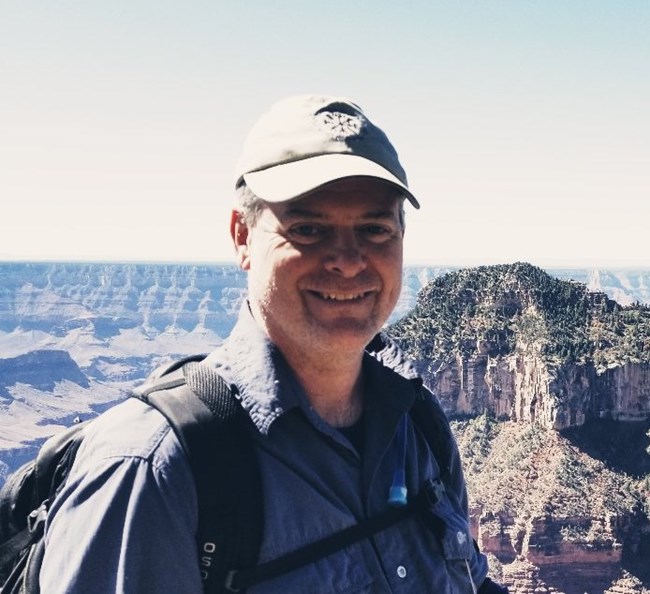Last updated: September 11, 2020
Article
Protecting America’s Cultural Resources as a Preservation Architect

What is your name and job title? Paul Woodruff, Preservation Architect, Denver Service Center (DSC).
What experience and education do you have? I have degree in Architecture from Ohio State University with a minor in history. I graduated in 1985 and obtained my Ohio architectural registration in 1993. In 1994 I began my own full-service architectural firm in Columbus, Ohio, designing a broad spectrum of building types and uses, everything from residential, retail, fast food, education, healthcare, industrial, to federal projects. Many of these projects involved historic buildings, such as conversion of the six-story historic Hartman Hotel into condominiums. I consulted with the Ohio State Historic Preservation Office for the city of Pickerington for their community block grant and chaired their old downtown historical commission. In 2009 I closed the business and with my two boys grown and out on their own, I took a position with the U.S. Air Force as the Cultural Resources Program Manager for Wright-Patterson Air Force Base. In this capacity I worked hand-in-hand with the base civil engineers ensuring preservation of historic properties on base and soon became involved with supporting the Air Force-wide cultural resource program, assisting other bases in evaluation and preservation efforts. I also participated in Department of Defense level work representing the Air Force on several DoD (Department of Defense) initiatives regarding cultural resources. I also worked closely with Dayton Aviation Heritage National Historical Park (DAAV) in their partnership with the base in managing Huffman Prairie Flying Field National Historical Landmark (NHL).
What attracted you to a position with the National Park Service? I have always liked the National Park Service (NPS) and in my role as Cultural Resource Manager I was able to work closely with DAAV in managing the NHL. I love backpacking, hiking, canoeing, and the outdoors in general and when my current position was posted I just had to apply for it. This job combines all the things I love, history, architecture, and the great outdoors.
What projects are you working on? The first week on the job DAAV asked me to look at the Charles Young House, which is now a national monument. We are working through the challenges of rehabilitating the turn of the century structure. I am also working with Cape Hatteras National Seashore in rehabilitation of the Cape Hatteras Lighthouse. As you can image this is another very challenging project to preserve the lighthouse in the coastal environment. Aside from those two I have the great fortune to be able to help with projects across the entire expanse of the NPS.
What is a typical day like? I don’t think I have a typical day yet. It is difficult trying to onboard in a new position in telework status during these times. Like everyone checking emails takes a good portion of the day along with meetings and training. A good bit of what I do is research. I am always looking for better means of preserving things, and treatments that can be used. I review various project submittals to make sure our approach to preservation in these projects are appropriate for the resource. I also look at accessibility for the various projects.
What career advice would you give to someone who wants to follow a similar path? Education and internship, I think are very important first steps. To become a registered architect today you need to obtain a master’s degree and complete your internship before you can sit for the registration exam. I am a bit old school; I actually began my education on the drawing board with pencil and paper. I am in that narrow generation of architects who transitioned into computer drawing using AutoCAD, and I still use it today. As I began working, I tried to learn everything there is to know about all different kinds of architecture. Some architects tend to specialize, working only on education projects, or healthcare projects for example. I diversified and gained experience in many different areas. I always loved history and now I have actually become more specialized, focusing on historic preservation. To become an architect or preservation architect for that matter, takes years of education in and out of school, and perseverance.
